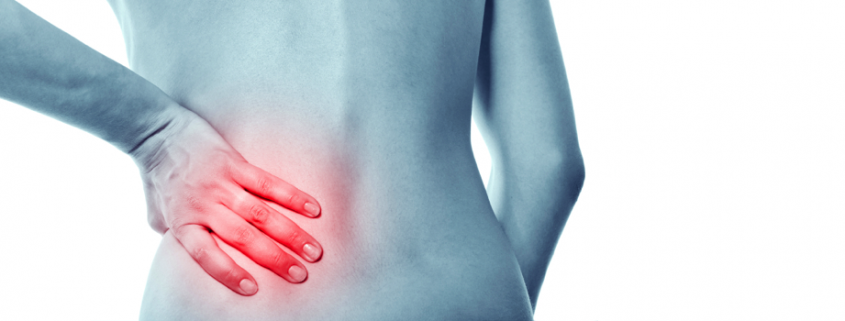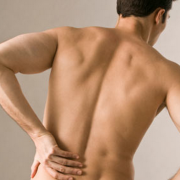Internal Disc Disruption (IDD) is minor damage to a disc, it is known as one of the most common causes of lower back pain. IDD accounts for around 40% to 50% of lower back pain. A number of factors can cause damage to the disc, ranging from the degenerative nature of this disc itself to poor postural habits developed over a long periods of time, and to injury and overload. Back pain and injury are caused by any number of factors that places excessive force on the spine.
Too much mechanical stress or dysfunction may occur due to repetitive strain on the spine leading to fatigue, one very large strain, or unexpected strain. Injury to the disc can be caused by poor technique and strain in physical activities or poor body mechanics. All of these can result from unexpected loading.
Discs are mainly avascular structures and the nucleus and inner 2/3 of the annulus have no nerves. The outer third of the disc does, however, contain tiny pain-carrying nerve fibres (nocioceptive C-fibres) that have the capacity to cause pain and disability when irritated. When a tear of the annulus spreads to the outer third of the disc, these nerve endings (known as sino-vertebral nerve endings) are exposed to material leaking out from the nucleus of the disc which will lead to pain due to chemical irritation of these pain-carrying fibres.
When the functional abilities of the annulus are compromised mechanical pain can occur. Annular collagen fibres are destroyed when the nuclear material invades the annulus. The disc’s normal ability to support the weight of the body is overwhelmed when mechanical forces spread across the remaining fibres which will result in strong compression and rotation forces being placed on the spine.
The excessive strain transmitted to the highly nerve sensitive outer third of the disc results in mechanical pain signals on normal movements. Tears can occur from the inner part of the disc outwards but also from the outer part in. There is also a relationship between a disc that has lost some of its water content and become increasingly brittle (part of the degenerative disc process) and disc tears.
In a degenerative disc, you can also get radial tears running circumferentially around the brittle annulus itself. This can lead to a weakening of the disc. These tears are known as concentric annular tears, or radial tears, and irritation of the nerve fibers within the annulus of the disc may occur.
The symptoms of back pain due to disc disruption are of chronic duration and typically worse with any loading of the disc or activities that increase the intradiscal pressure. Activities such as bending, lifting, sitting and, sometimes changes in posture are all results of this. he pain is actually due to damage to the rings of the outer part (annulus) of the disc itself and not due to compression of the nerve. The resulting changes to the nuclear material and internal radial fissures lead to a pain that does not usually radiate into either leg past the knee and there are not usually classic neurological findings.
In other words, there is generally no weakness or sensory loss, no loss of deep tendon reflexes or root tension signs.
Conservative low back pain treatment and time will bring relief for most people who suffer back pain from IDD. Patience is an important factor here as IDD can take up to 18 to 24 months to heal. The other important factor is to reclaim mobility as early in the healing process as possible, without exacerbating the pain. This is where the Sydney CBD osteopaths at Sydney Osteopathic Medicine can help. Osteopathic treatment may include traction and mobilisation treatments and spinal stabilization training exercises.
The early stages of the healing process can be aided by anti-inflammatory and analgesic medications.









